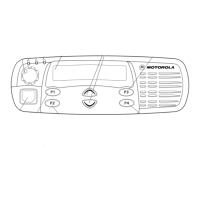Section 3: i
6881091C63-F
Section 3: Controller Service Maintainability
Table of Contents
Chapter 1 Theory of Operation
1.0 Controller Circuits .............................................................................................3:1-1
1.1 Overview......................................................................................................3:1-1
1.2 General........................................................................................................3:1-1
1.3 Radio Power Distribution.............................................................................3:1-2
1.4 Electronic ON/OFF ......................................................................................3:1-4
1.5 Emergency ..................................................................................................3:1-4
1.6 Mechanical ON/OFF....................................................................................3:1-5
1.7 Ignition.........................................................................................................3:1-5
1.8 Microprocessor Clock Synthesizer ..............................................................3:1-5
1.9 Serial Peripheral Interface (SPI)..................................................................3:1-6
1.10 SBEP Serial Interface..................................................................................3:1-7
1.11 General Purpose Input/Output.....................................................................3:1-7
1.12 Normal Microprocessor Operation...............................................................3:1-8
1.13 FLASH Electronically Erasable Programmable Memory (FLASH EEPROM)3:1-
9
1.14 Electrically Erasable Programmable Memory (EEPROM)...........................3:1-9
1.15 Static Random Access Memory (SRAM)...................................................3:1-10
2.0 Controller Board Audio and Signaling Circuits................................................3:1-10
2.1 Audio Signaling Filter IC with Compander (ASFIC CMP)..........................3:1-10
2.2 Transmit Audio Circuits .............................................................................3:1-11
2.3 Transmit Signaling Circuits........................................................................3:1-13
2.4 Receive Audio Circuits ..............................................................................3:1-15
2.5 Receive Signaling Circuits.........................................................................3:1-18
2.6 Voice Storage (Optional) ...........................................................................3:1-19
Chapter 2 Troubleshooting Charts
1.0 Troubleshooting Flow Chart for Controller........................................................3:2-1
Chapter 3 Controller Schematics and Parts Lists
1.0 Allocation of Schematics and Circuit Boards ....................................................3:3-1
1.1 Controller Circuits........................................................................................3:3-1
1.2 Voice Storage Facility..................................................................................3:3-1
2.0 Controller T2 Schematics and Parts Lists.........................................................3:3-5
3.0 Controller T5 Schematics and Parts Lists.......................................................3:3-12
4.0 Controller T6/T7/T9 Schematics and Parts Lists ............................................3:3-20

